Crisis Scenario:
Organisational Misdeed: Skewed Management Values
 Crises of organisational misdeeds arise when management makes certain decisions, knowing the harmful consequences.
Crises of organisational misdeeds arise when management makes certain decisions, knowing the harmful consequences.
In such cases, superiors overlook the long-term consequences of strategies and implement them for immediate results. This will adversely affect the stakeholders and external parties (or interested parties).
Examples of organisational misdeeds can be further classified into the following three types. They are: Skewed Management Values
Deception and Management Misconduct.
Skewed Management Values
The crisis of Skewed Management Values arises when management prioritises short-term growth over broader issues.
Introduction

Crises triggered by Skewed Management Values represent one of the most corrosive forms of organisational misdeeds.
When leadership operates with distorted ethics—placing profits above principles, or loyalty above competence—the very foundation of trust and accountability within the organisation begins to deteriorate.
These behaviours often remain hidden until they manifest as systemic failures, public scandals, or regulatory breaches. The consequences are not just reputational; they include weakened employee morale, loss of investor confidence, and long-term damage to brand credibility.
In many cases, skewed values emerge gradually, masked by strong performance indicators or charismatic leadership.
However, when leadership consistently suppresses dissent, avoids transparency, and ignores regulatory or social responsibilities, it creates an environment ripe for misconduct and organisational failure.
The table below outlines real-world examples of how skewed management values can lead to crises, providing a framework for identifying and addressing early warning signs of ethical drift at the executive level.
Definition: Skewed Management Values
Organisational Misdeeds – Skewed Management Values refer to unethical or irresponsible decisions made by leadership that prioritise personal interests, profit, or short-term gains over integrity, compliance, employee well-being, and stakeholder trust.
These misdeeds stem from a distorted value system at the top of the organisation, where ethical considerations are sidelined in favour of retaining power, financial manipulation, or managing public image.
Over time, this misalignment erodes corporate culture, damages the organisation's reputation, and exposes it to legal and operational risks.
Example of Crisis Scenario: Skewed Management Values
The table below shows a list of examples for the crisis scenario: Organisational Misdeeds – Skewed Management Values, which typically involve unethical or irresponsible decisions by senior leadership that prioritise profit, power, or self-interest over compliance, integrity, or stakeholder welfare.
| No. | Example | Description |
|---|---|---|
| 1 | Concealing Financial Losses | Executives intentionally hide company losses or manipulate accounting to mislead investors and regulators. |
| 2 | Unethical Sales Targets and Pressure | Management imposes unrealistic targets, encouraging staff to deceive customers or forge documents to meet KPIs. |
| 3 | Suppressing Whistleblowers | Internal whistleblowers are silenced, punished, or dismissed for exposing misconduct or safety concerns. |
| 4 | Neglecting Compliance for Profit | The organisation knowingly violates legal or regulatory requirements to reduce costs or gain a competitive edge. |
| 5 | Executive Excess and Misuse of Funds | Senior management indulges in lavish spending, personal perks, or misappropriates corporate assets. |
| 6 | Disregard for Workplace Safety | Leadership ignores known safety hazards or suppresses incident reports to avoid scrutiny or operational disruption. |
| 7 | Exploiting Labour or Contractors | Management knowingly underpays or mistreats workers, especially vulnerable groups or outsourced contractors. |
| 8 | Cover-up of Misconduct | Senior leaders often collude to cover up incidents of harassment, discrimination, or corruption within the company. |
| 9 | Ignoring Environmental Harm | The organisation downplays or hides its role in causing pollution, deforestation, or ecological damage. |
| 10 | Favouritism and Nepotism in Hiring | Executives bypass fair hiring practices to appoint family, friends, or loyalists to key roles without merit. |
| 11 | Unfair Retrenchment Practices | Staff are laid off without due process, proper compensation, or transparency during organisational restructuring. |
| 12 | Misleading Advertising or Public Statements | Company leaders approve false or misleading claims to maintain a positive image or increase sales. |
| 13 | Ignoring Data Privacy Violations | Management neglects to report or correct breaches of customer data to avoid penalties or bad press. |
| 14 | Manipulating CSR Initiatives | Corporate social responsibility projects are often used as a PR cover-up while unethical core practices continue. |
| 15 | Suppressing Independent Audits or Reports | Executives may interfere with internal or external audits or research that could expose poor governance or risk. |
Conclusion
Addressing the risks associated with Skewed Management Values requires more than enforcing compliance; it demands a deep-rooted cultural shift toward ethical leadership and principled decision-making.
Organisations must promote accountability at every level, ensuring that values such as integrity, fairness, and transparency are reflected not just in policy but in practice.
Strong governance structures, regular ethical audits, and leadership development grounded in corporate responsibility are essential to counteract the dangers posed by misaligned values at the top.
Ultimately, the health of an organisation is deeply tied to the character of its leadership. When management embodies ethical clarity and acts in the interest of all stakeholders—not just shareholders—resilience, trust, and sustainable growth follow.
Recognising the red flags associated with skewed values and intervening early can help organisations avert crises and build a culture of integrity that endures even under pressure.
Reflection as a BCM and CM Practitioner
 As discussed in "What Crisis or Crisis Scenario Should I Be Planning For My Organisation?", you may wonder whether this type of crisis may not be part of your job scope. Click the right icon to read more
As discussed in "What Crisis or Crisis Scenario Should I Be Planning For My Organisation?", you may wonder whether this type of crisis may not be part of your job scope. Click the right icon to read more
The key in this discussion is to identify the kinds of crisis scenarios and to raise them with the relevant interested parties for responsible professionals who have recognised the potential for a crisis, so that they can implement a crisis response tailored to this specific scenario.
Find out more about Blended Learning, Crisis Management & Crisis Communication Certification Programs.
Contact our course consultant colleagues to learn more about our blended learning crisis management and crisis communication certification program, as well as when the next course is scheduled.
The crisis communication blended learning courses are the CM-3 Blended Learning CM-300 Crisis Management Implementer and the CM-5 Blended Learning CM-5000 Crisis Management Expert Implementer.
| Crisis Management CM-5 & CM-3 | ||
 |
 |
![[BL-CM] [5] Register](https://no-cache.hubspot.com/cta/default/3893111/82024308-16f4-4491-98be-818a882c6286.png) |
 |
 |
 |
| Crisis Communication CC-5 & CC-3 | ||
 |
||
![Register [BL-CC-3]*](https://no-cache.hubspot.com/cta/default/3893111/7ba2f5f9-19ae-4a0e-a599-a2653b8c0bb5.png) |
||
 |
Please feel free to send us a note if you have any of these questions to ![Email to Sales Team [BCM Institute]](https://no-cache.hubspot.com/cta/default/3893111/3c53daeb-2836-4843-b0e0-645baee2ab9e.png) |
 |
Do You Want BCM Institute to conduct training courses funded by the Singaporean and Malaysian governments to implement or update your BC or CM plans?
Reference Guide
 Goh, M. H. (2016). A Manager’s Guide to Implement Your Crisis Management Plan. Business Continuity Management Specialist Series (1st ed., p. 192). Singapore: GMH Pte Ltd.
Goh, M. H. (2016). A Manager’s Guide to Implement Your Crisis Management Plan. Business Continuity Management Specialist Series (1st ed., p. 192). Singapore: GMH Pte Ltd.
Note: This version is the draft 2nd Edition being updated in 2024. The numbers in the square brackets {C##] and [AX-#] are the cross-referencing of the actual chapter and appendices in the 2016 Edition.





![[BL-3-Catalog] What Specialist Level Blended Learning Courses that are Available?](https://no-cache.hubspot.com/cta/default/3893111/4b22a53c-6e3e-4b9e-8c2a-888423f1d26c.png)
![[BL-5-Catalog] What Expert Level Blended Learning Courses that are Available?](https://no-cache.hubspot.com/cta/default/3893111/fe175db3-7f57-4636-bf09-e9a836aa5478.png)

